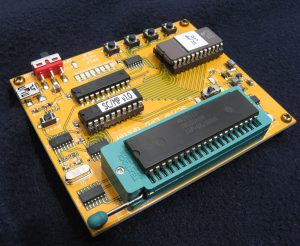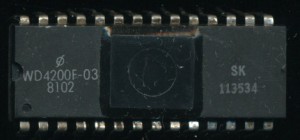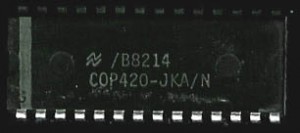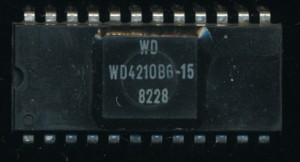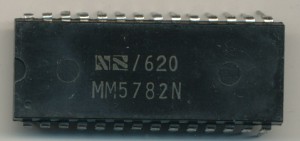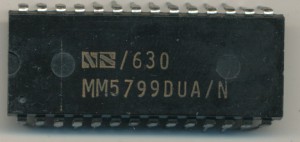
National Semiconductor COP2404N – Dual core processor
National Semiconductor introduced the COPS series of 4-bit processors in 1977. COPS came from National’s calculator line of chips, and for a short time were known as Calculator Oriented Processors, however this was rapidly changed to Control Oriented Processor System (COPS). These 4-bit microcontrollers, as their name suggests, were for controlling various consumer devices. They were used in all sorts of devices from game consoles, to dishwashers. In the early 1980s National began producing them in CMOS versions, and in 1988 they extended the line to 8-bit (the COP8 family).
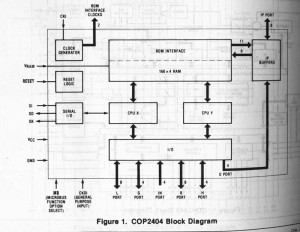
COP2404 Block Diagram – 2 Cores with shared memory. – Click to enlarge
In 1981 the COP2404 (and 2440) were announced, with availability beginning in 1982. The COP2404 was on the top end of the COPS line, it was found that some real time control operations were better served by 2 microcontrollers, so why not design 2 into one. The 2404 is a dual core processor, with two complete COPS404 cores on one die, sharing I/O and RAM. (The 2440 also included ROM). True to multi-core form, the memory was shared, meaning the processors could work independently or pass data to each other, including task handoffs if the programmer so desired. This wasn’t implemented in hardware, but it wasn’t forbidden either, meaning a programmer could do some pretty complicated task management with the dual CPU cores.
The 2404 was packed in a 48 pin PDIP, and was designed as a development device for use with external program memory (EPROM typically). Production devices were the 2440 (40 pin) 2441 (28 pin) and 2442 (24 pin) which all had 2K of ROM on die. All included 160×4 bits of RAM and had an instruction cycle of 4usec (using a 4MHz clock, as each instruction took 16 cycles). They were manufactured on a 3-micron NMOS process (originally, likely shrunk over time).
As technology progressed it became easier to handle multiple real time tasks with a single, faster controller, with good hardware interrupt handling, but for a time, their was a dual-core processor. The COPS series continued to be sold by National until 2011, when they were bought by Texas Instruments. While no longer actively marketed, several members of the COP8 line are still being sold.


